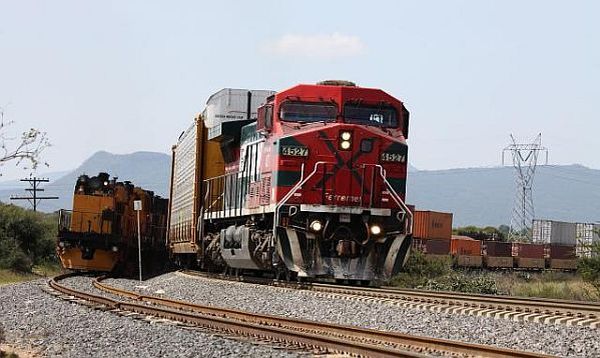A Chinese development company has inked a deal to build a rail line linking Mexico’s Pacific coast with an industrial hub just south of New Mexico’s Santa Teresa port of entry, according to the Mexican newspaper El Diario.
Plans for a railroad between Mexico’s west coast and the New Mexico border have been considered for years, without result. News this week that Chihuahua state Governor César Duarte signed an agreement in Beijing with developer China Hyway Group Ltd., the China Development Bank, and other investors is the most concrete step yet in that direction — and it was met with some skepticism on the US side of the border.
Terms of the deal were not reported, and the Chihuahua state government did not return requests for comment.
Numerous obstacles could thwart the rail line’s completion, not the least of which is a yet-to-be-built deepwater port in Nayarit state, where the line would originate, and a Mexican rail industry dominated by two companies that have not historically welcomed outside competition.
Seemingly, the railroad would link the proposed port in Nayarit and San Jerónimo at the western edge of Ciudad Juárez and across from Santa Teresa. San Jerónimo is home to the Taiwanese electronics manufacturer Foxconn and is expected to become the sprawling border city’s next area of expansion.
Just north of San Jerónimo lies New Mexico’s fast-growing industrial enclave of Santa Teresa, where Union Pacific recently opened a $400 million major rail yard and terminal.
Jon Barela, New Mexico secretary of economic development, said he believes the project could "provide a potentially game-changing approach to how commerce will flow from Asia to the Americas, and New Mexico will be an integral part of that transportation system."
If the project really were to come to fruition, "it would make the region the most competitive along the border," said Francisco Uranga, Foxconn vice president and chief business operations officer for Latin America. "Having rail all the way through Mexico from our border crossing would be an amazing magnet for competitive purposes."
New Mexico, meanwhile, is in the early stages of planning a study to judge whether a cross-border rail spur at Santa Teresa and San Jerónimo is even feasible; the end of July was the deadline for proposals.
"We’re excited about all the growth not only in Chihuahua and southern New Mexico, and the rail bypass project. The spur that would connect any new railroad in Mexico to New Mexico could be another pillar of economic development," said Jerry Pacheco, vice president of the Border Industrial Association. "But we really need to see what the feasibility study is going to say."
Two private railroads in Mexico — Ferromex and Kansas City Southern de México — manage all of the country’s rail infrastructure, which was largely built by the federal government around the turn of the last century and hasn’t been expanded much in 100 years, experts say.
Ferromex is a joint subsidiary of Mexican miner Grupo Mexico, the US railroad Union Pacific, and one of Mexico’s three railway concession-holders.
Chihuahua's Governor Duarte, who announced the deal alongside Nayarit Governor Roberto Sandoval in Beijing, said the project will spur development at the San Jerónimo-Santa Teresa port of entry.
Duarte has made a rail line to the west coast a priority of his administration, but it isn’t clear whether the project has the support of the Mexican federal government — critical, observers say, in a country where power is highly centralized.
Work is expected to begin by year end, according to the newspaper report.
Original Story


